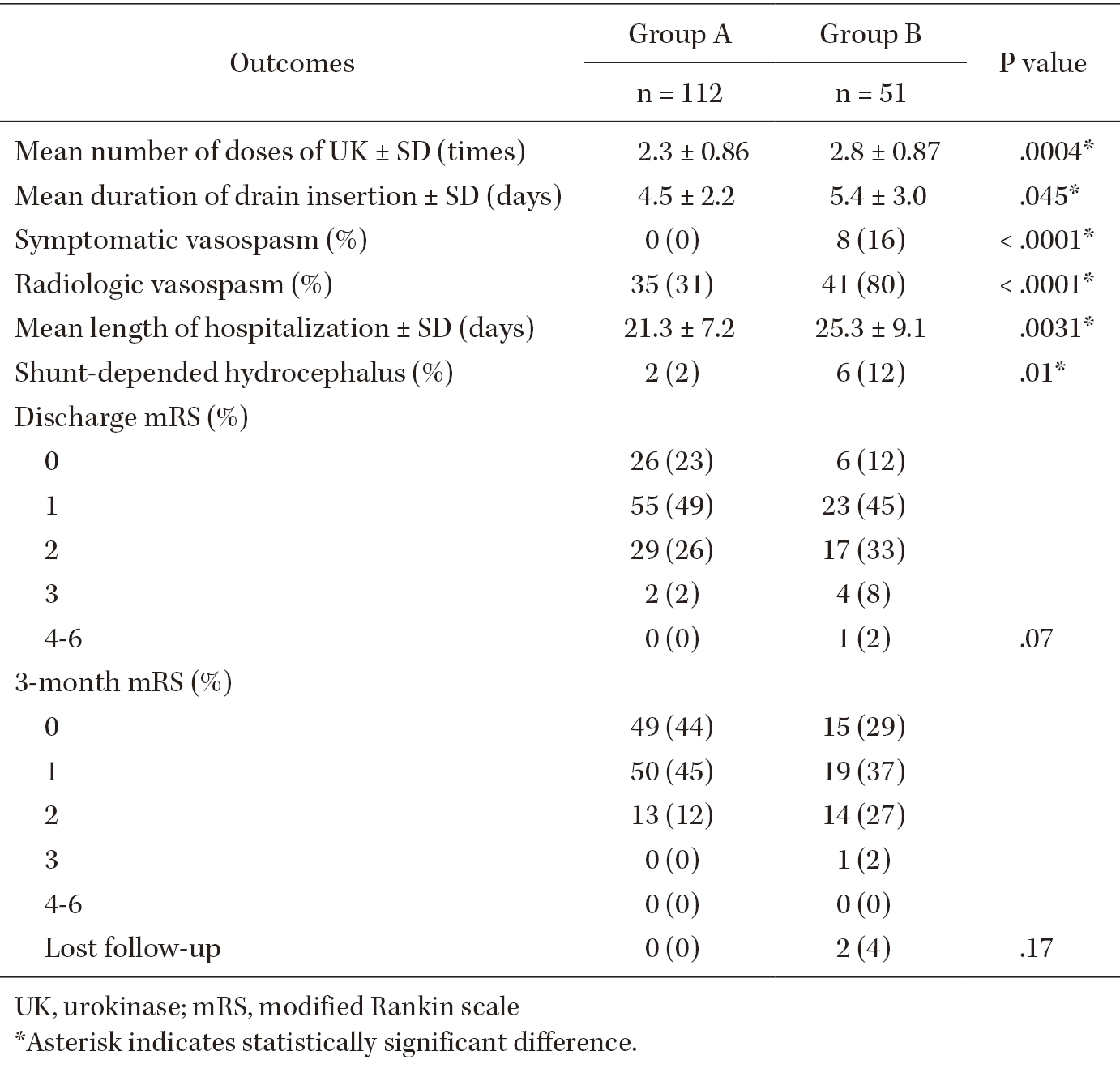- 著者
- Arata NAGAI Yasuhiro SUZUKI Tomohisa ISHIDA Yoshimichi SATO Tomoo INOUE Teiji TOMINAGA
- 出版者
- The Japan Neurosurgical Society
- 雑誌
- Neurologia medico-chirurgica (ISSN:04708105)
- 巻号頁・発行日
- pp.2022-0155, (Released:2022-10-13)
- 参考文献数
- 31
- 被引用文献数
- 1
Delayed cerebral vasospasms after subarachnoid hemorrhage (SAH) are a risk factor for poor prognosis after successful treatment of ruptured intracranial aneurysms. Different strategies to remove clots from the subarachnoid space and prevent vasospasms have different outcomes. Intrathecal urokinase infusion therapy combined with endovascular treatment (EVT) can reduce the incidence of symptomatic vasospasms. To analyze the relationship between symptomatic vasospasms and residual SAHs after urokinase infusion therapy, we retrospectively reviewed the records of 348 consecutive patients managed with EVT and intrathecal urokinase infusion therapy for aneurysmal SAH at our institution between 2010 and 2021. Among them, 163 patients met the study criteria and were classified into two groups according to the presence of residual SAH in the cisterns, Sylvian fissures, and frontal interhemispheric fissure. The incidence of symptomatic vasospasms and the clinical outcomes were assessed. In total, eight (5.0%) patients developed symptomatic vasospasms. Patients with symptomatic vasospasms had a significantly higher incidence of residual SAH in the Sylvian or frontal interhemispheric fissures than those without (P <.0001). No patient with SAHs resolved by urokinase infusion therapy developed symptomatic vasospasms. However, the two groups did not differ significantly in terms of modified Rankin scale scores at discharge. Treatment with intrathecal urokinase infusion after EVT for aneurysmal SAH can substantially reduce the risk of clinically evident vasospasms.
